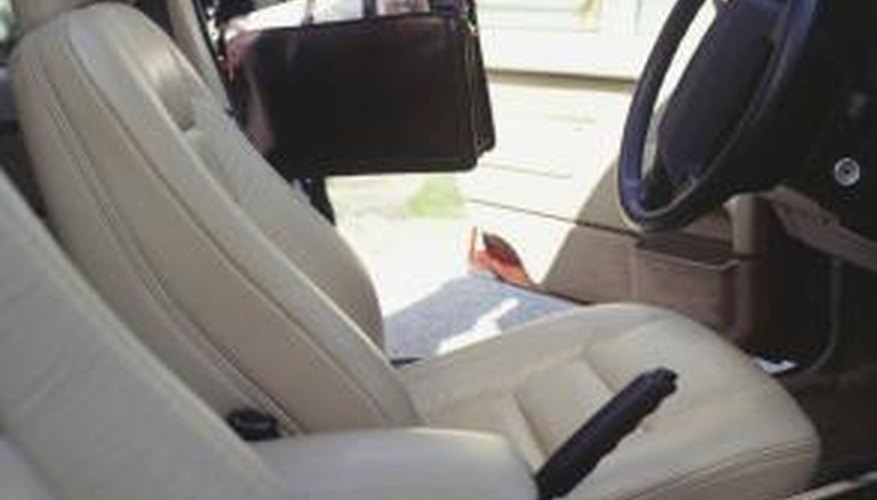Mold will take hold and grow on any organic surface, especially where the humidity levels are high and fresh air does not circulate well, making cars not used for a period of time a potential mould growth target. Once you have noted that mould is growing on your car's seats, you must take measures to eliminate the mould and keep it from coming back. Improper cleaning methods may in fact spread the mould spores, which will lead to mould growing on other surfaces in the car.
- Mold will take hold and grow on any organic surface, especially where the humidity levels are high and fresh air does not circulate well, making cars not used for a period of time a potential mould growth target.
- Improper cleaning methods may in fact spread the mould spores, which will lead to mould growing on other surfaces in the car.
Park the car in a well-ventilated area, preferably outside. Roll down the car's windows and open the sunroof, if one is available.
Spray the car seats with water using a spray bottle, but do not soak the seats. Wet mould will be less likely to release spores, protecting your health and keeping the mould from spreading to other areas of the car. Vacuum as much of the mould as possible from the seats, and then immediately empty the vacuum.
Apply an upholstery shampoo, if the seats are upholstered, and lightly brush the shampoo into the material using the brush that comes with the shampoo. Wet a clean rag and wipe the shampoo off the seats, and leave the car's windows down until the seats are completely dry.
Brush the mould off leather seats using a stiff-bristle brush. Leave the car's windows down and let the leather dry completely. Combine 1 cup denatured alcohol with 1 cup water and moisten a clean cloth with the mixture. Once the leather is completely dry, rub the cloth over the mouldy areas and then allow the seats to dry completely again.
